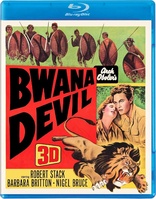Bwana Devil 3D Blu-ray Movie
HomeBwana Devil 3D Blu-ray Movie 
Blu-ray 3D + Blu-ray + Anaglyph 3DKino Lorber | 1952 | 86 min | Not rated | Jul 30, 2024
Movie rating
6.9 | / 10 |
Blu-ray rating
| Users | 0.0 | |
| Reviewer | 4.0 | |
| Overall | 4.0 |
Overview
Bwana Devil 3D (1952)
British railway workers in Kenya are becoming the favorite snack of two man-eating lions. Head engineer Bob Hayward becomes obsessed with trying to kill the beasts before they maul everyone on his crew.
Starring: Robert Stack, Barbara Britton, Nigel Bruce, Ramsay Hill, Paul McVeyDirector: Arch Oboler
| Adventure | Uncertain |
| Action | Uncertain |
Specifications
Video
Video codec: MPEG-4 AVC
Video resolution: 1080p
Aspect ratio: 1.37:1
Original aspect ratio: 1.37:1
Audio
English: DTS-HD Master Audio 2.0 Mono (48kHz, 16-bit)
Subtitles
English SDH
Discs
Blu-ray Disc
Single disc (1 BD)
Blu-ray 3D
Anaglyph 3D
Packaging
Slipcover in original pressing
Playback
Region A (locked)
Review
Rating summary
| Movie | 2.5 | |
| Video | 4.5 | |
| Audio | 4.0 | |
| Extras | 2.0 | |
| Overall | 4.0 |
Bwana Devil 3D Blu-ray Movie Review
Reviewed by Dr. Stephen Larson September 22, 2024When Bwana Devil, the first color feature-length motion picture in three dimensions, played at the Paramount Theater on Hollywood
Boulevard in late November 1952, lines stretched two blocks long for two days, according to a United Press (UP) correspondent that was present.
Audiences were excited to see the debut of Natural Vision, a 3D cinema system in which two films are recorded with lenses that polarize light at
divergent angles. While patrons were less than thrilled to have to wear polarized glasses handed to them by the ushers, they were anxious to see
what cinema's latest novelty could offer.
One of the most interesting discoveries in my research into Bwana Devil was that the censors at the Breen office (home of the Production
Code Administration in the 1950s) objected to so-called "love-making scenes" between the married couple portrayed by Robert Stack and Barbara
Britton. The UP reported that the PCA chose not to approve the scenes because the 3D effect likely gave audiences "a feeling of personal participation
in the romancing." The UP noted that one love sequence "caused considerable squirming" among theatergoers. The UP interviewed writer/director
Arch Oboler, who heard from audience members that after watching his film, they felt Natural Vision was “more realistic” than 2D. Oboler opted to
preserve the romance scenes and not alter the film in any way. Without PCA approval in those days, theaters were most reluctant to show any movie.
They made an exception with Bwana Devil. I haven't found an account in which any theater refused to screen the picture. Remarkably, PCA
chair Joseph Breen had not even seen Bwana Devil around the time his censorship board began making protestations, according to Oboler.
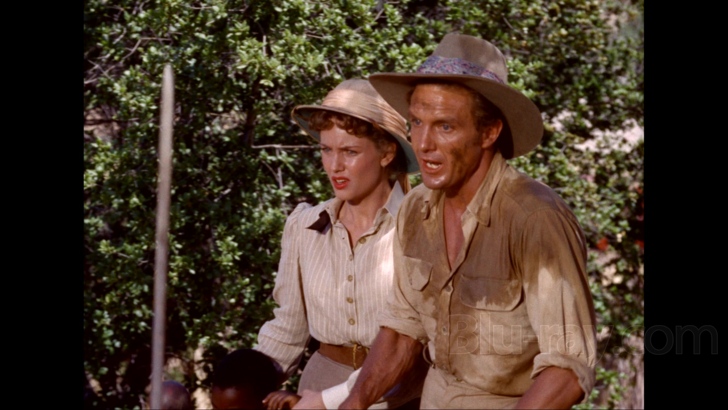
Let's go hunt lions.
It's rather unfortunate, though, that there's nothing scandalous in Bwana Devil's narrative. Oboler was a prolific writer of radio plays before making films and surprisingly, his writing gifts don't serve the film well. Oboler originally titled the project The Lions of Gulu but later changed it to Bwana Devil, which refers to the factual tale of two people-eating killer lions that occurred in British East Africa ca. 1898. English engineer Bob Howard (Robert Stack) arrives in the country to act as a game hunter to stop the lions from mauling the laborers, who have been working on a trans railroad system. Howard works with Dr. Angus McLean (Nigel Bruce), the on-site medical officer. But Oboler doesn't really give McLean much to do aside from talk a lot, with impertinent dialogue that doesn't advance the story. Howard recruits warriors from the Masai, who surround one of the lions and attempt to lance it with their spears.
Oboler errors in not introducing Bob's wife, Alice Hayward (Barbara Britton), until after the intermission. She becomes a caretaker to an African boy and accompanies her husband on his hunting trips but beyond that, she's merely present to fill the void of female characters absent during the first half. Oboler also shortchanges a larger role he seems to promise for Major Parkhurst (Ramsay Hill), although he isn't a likeable character to begin with. Bwana Devil is often too dialogue heavy in non-stimulating ways and this undercuts its dramatic tension, which commences but Oboler can't sustain. Oboler does deserve large credit for the stereoscopic design of the picture, which will be discussed in the next section.
Bwana Devil 3D Blu-ray Movie, Video Quality 
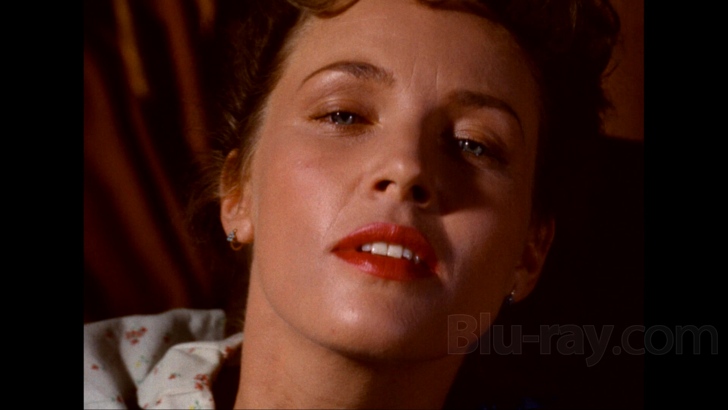
Kino Lorber Studio Classics' release of Bwana Devil comes with a slipcover on this BD-50 (disc size: 44.58 GB). The picture appears in its
originally composed and exhibited ratio of 1.37:1. The disc provides viewers with options of watching the film in RealD 3D, anaglyph 3D, and 2D.
(The disc employs the MVC and AVC video codecs.) The restoration of the film's original camera negatives was carried out in 4K resolution by the 3-D
Film Archive LLC. I will discuss details of the 3D presentation in one of the next paragraphs but first, a brief overview of the original production. Arch
Oboler spent roughly a year on safari recording audio-visual footage in Kenya, Uganda, and the Belgian Congo. Snippets of this footage are
integrated into the feature. Cinematographer Joseph F. Biroc primarily filmed the actors in California's mountainous Malibu Hills. Biroc shot the picture
in Ansco Color, a cheaper alternative to Technicolor. R.M. Hayes documents in his book, 3-D Movies: A History and Filmography of Stereoscopic
Cinema, that the film reels were transferred to DuPont print stock, which was used for the theatrical prints.
As you watch Bwana Devil, you'll notice images of the hippopotamus and rhinoceros that Oboler captured while in Africa. This "stock footage"
sometimes becomes the backgrounds for future rear projection, which completed later in the production (see Screenshot #s 32-34). In addition,
you'll no doubt spot exteriors in certain scenes that were shot in daytime but in successive shots within the same scene, the lighting all of a sudden
shifts to a darker look with washed colors and paler tones. See some examples of these back-to-back shots in frame grab #s 25-30. The
discrepancies in color temperature for successive shots in a given scene were, in high probability, how the film appeared on screen in 1952-53. Henry
Provisor, a writer for Home Movies magazine, saw Bwana Devil at a press screening before its Los Angeles premiere and observed
the following: "[T]he color balance is horrible (not the fault of the film) and is reminiscent of the poorest color films. In many cases, one half of a
scene was well exposed while the other half was completely overexposed...Overall sharpness was not present in anything but the longest of long-
shots...the whole thing felt (to this viewer), as if we were seeing the film through a wet glass sheet." Although Provisor didn't overtly mention the
rear-projected shots in his review, he noted stark differences in clarity between two planes in a shot: "Focus was off, more often than not. In one
particular scene containing two people against a background of palm leaves, we found that when we looked directly at the actors they were in focus
and the leaves were not. Glancing at the leaves, they were sharp and the actors were not." Jay Carmody, the film critic for the Evening Star,
made similar points: "Its images are frequently fuzzy, moving figures sometimes blur, and there is loss of focus in switches from light to dark color
tones." (It seems that both Provisor and Carmody saw the film in 3D.) So, sharp differences in color balance between consecutive shots were an
inherent flaw in the film's original photographic process and not the fault of the digital color grading you see on this transfer.
The 3-D Film Archive should be commended for the excellent job it did in restoring the image frame by frame. There are no conspicuous source flaws
or artifacts to be found. Grain in the 2D and 3D presentations shows up fairly abundantly and is well balanced in the closer shots. The sky boasts a
lush blue in several close-ups (see screen capture #s 13-16). Colors on shirts and turbans worn by the Hindus look resplendent (see #s 3 and 9-12).
I watched Bwana Devil twice in true 3D on my LG LED display with AoHeng Cinema Passive 3D Glasses. While this presentation doesn't have
that many pop-out effects, it boasts excellent depth cues. I have no doubt that the 3D restoration maintains the provenance of the original
stereoscopic appearance. For instance, the first post-main titles shot is a fine close-up of a man and straw sticking out of the village hut (see #9 for
the frame match in 2D). Joe Botsford, who reviewed the film in February 1953 for a Wisconsin newspaper, saw it pop out, too: "When a native poked
his head out of some brush in the opening scene, the tall weeds seemed to bend right out over the audience." Biroc filmed a number of multi-plane
compositions that sometimes appeared in quasi-deep focus, especially when seen with polarized glasses. The shot of the major writing on a table
with Dr. McLean approaching him and the red train in the distant background is a nice example (#8). The aforementioned close-ups of various
characters looked ultra-clear and vivid in 3D. During the last third of the film, I could see the noses belonging to Robert Stack and Barbara Britton
poke out a bit. Very late in the film, the barrel of a bolt action rifle demonstrates extended range as it pulls out from the screen (see #22). Bwana
Devil is perhaps most famous for the "pop-out spears" (e.g., #5) as they feel in close (and sharp) proximity to the viewer. One of the few
disappointments I had with the original 3D is that Biroc and his camera operator Lothrop Worth couldn't do more with the 3D's depth of field when
lions moved across the frame or towards the camera from longer distances away in continuous shots. I read a few press clippings about the lions in
the film before watching the 3D version and don't feel it delivered enough what it promised. Biroc and Worth record some very close shots of the
lions but they didn't film as many shots of them in motion that I was expecting.
Not counting the original prologue that precedes the feature start, the movie receives eight chapter breaks from Kino. These are only accessible via
remote control. Please note that the original 1952 Intermission snipe is included here.
Bwana Devil 3D Blu-ray Movie, Audio Quality 
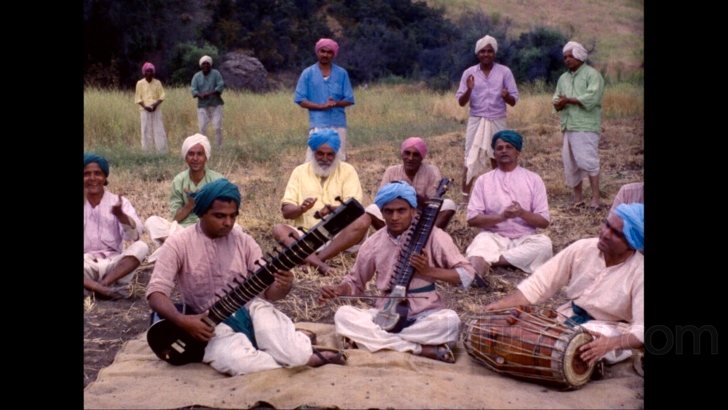
Bwana Devil's original interlock magnetic sound track is presented here with a DTS-HD Master Audio Dual Mono (1560 kbps, 16-bit) mix by
Kino. I located an advert in the January 1953 issue of American Cinematographer where Arch Oboler touted the Stancil-Hoffman's S-5
Synchronous Magnetic Film Recorder, which was utilized "exclusively" during production of Bwana Devil. Oboler explained that this recording
equipment "gives me better quality sound at lower cost than any other system I've used." The presentation of the Stancil-Hoffman recording sounds
very good on this track. Dialogue is generally clear and intelligible. I sometimes had difficulty hearing all of Nigel Bruce's lines, though. The songs,
ceremonial music, and tribal dances are performed in the film. (Some chanting is heard during the main titles, which is non-diegetic.) Oboler actually
recorded the various pieces of music in 1950 during field expeditions in Equatorial Africa. Decca released a two-sided vinyl record that year titled
Arch Oboler's African Adventure. There were three occasions on this monaural mix where I noticed light crackling, which fortunately didn't
muffle out any spoken words.
When I watched the film in 2D on my QLED, I played it with the optional English SDH, which appear complete and accurate.
Bwana Devil 3D Blu-ray Movie, Special Features and Extras 
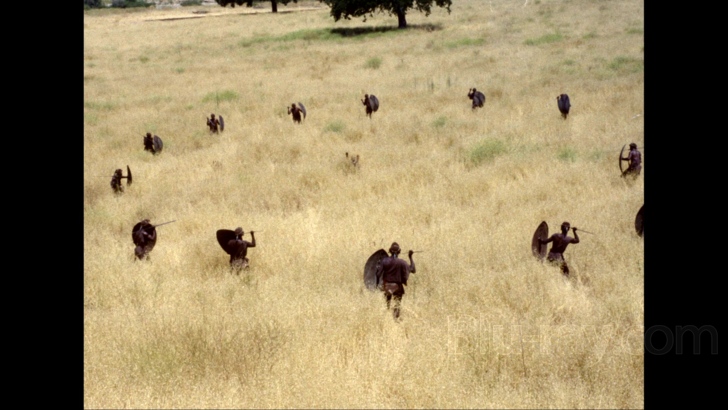
- M.L. Gunzburg Presents Natural Vision 3-Dimension (5:51, 1080p; in 2D or 3D) - this is the original prologue that preceded showings of Bwana Devil in 1952. It features actor Lloyd Nolan, who gives a rudimentary intro and demo to viewing 3D film. Miss USA recipient Shirley Tegge also appears in the piece. There's an interlude with the puppets Beanie and Cecil (from the TV show Time for Beanie) performing for the camera. You can watch the program in either 2D or 3D. Bwana Devil follows it. In English with optional English subtitles.
- 1953 2D Color Trailer for the 3D Release (3:07, upconverted to 1080p) - a theatrical trailer for Bwana Devil that promotes the Natural Vision process with sketches. The trailer's second half shows footage from the film. The trailer hasn't been restored. It contains print artifacts as well as pops and crackles on the audio track. It's still watchable, though.
- 1954 2D B&W Trailer for the Flat Release (0:54, 1080p) - this shorter trailer displays B&W stills from Bwana Devil's production, which are accompanied by voice-over narration.
- The Story of Bwana Devil (20:53, 1080p; in 2D or 3D) - Mike Ballew, author of the forthcoming book Close Enough to Touch: 3-D Comes to Hollywood, gives a presentation on the development of 3D and Natural Vision. He gives mini-bios of Milton Gunzburg and Arch Oboler, who Ballew explains had a "testy relationship." Ballew also delves into the financing of Bwana Devil and its production aspects. Ballew's narration is accompanied by stereo slides taken on location of Bwana Devil as well as the movie's poster art, lobby cards, and scans of articles from vintage Hollywood trade publications. The archival imagery pops out in the 3D version of this program. In English, not subtitled.
Bwana Devil 3D Blu-ray Movie, Overall Score and Recommendation 
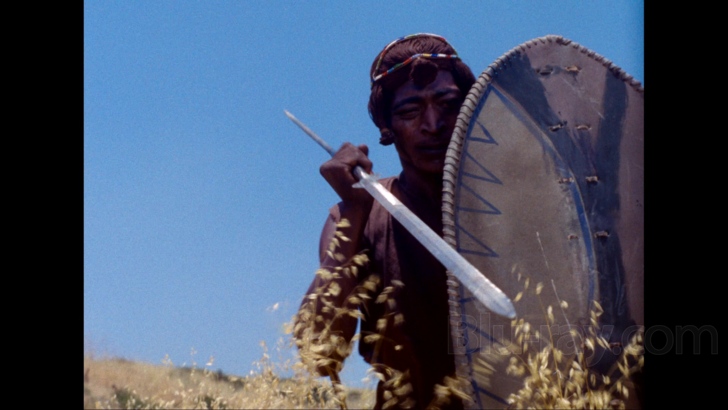
Bwana Devil (1952) is a major landmark in inaugurating color 3D and the Natural Vision process. This very fine package put together by the 3- D Film Archive and Kino Lorber is also a significant milestone because it is the official debut of Bwana Devil on physical home media in any format! The film's narrative is often plodding and dull but the depth cues on the 3D presentation still impress. Kino's transfers from a 4K scan of original elements are blemish free and faithful to the filmmakers' intentions. A MUST OWN for 3D fans and A VERY SOLID RECOMMENDATION all the way around.
Similar titles
Similar titles you might also like

Tarzan
2013

Jungle Shuffle 3D
2014

Jivaro 3D
Lost Treasure of the Amazon
1954

Secret Headquarters
2022

Adventure Time: Distant Lands
2020-2021

Scooby-Doo! Frankencreepy
2014

Red Sky
2013

The Phantom
2009

Dragon's Lair II: Time Warp
1991

Scooby-Doo! and the Alien Invaders
Warner Archive Collection
2000

Survivor: Kaôh Rōng - Season 32
2016

A Minecraft Movie
2025

G.I. Joe Renegades: The Complete First Season
2010-2011

Alpha and Omega 3: The Great Wolf Games
2014

Dragon's Lair
1983

Aztec Batman: Clash of Empires
Batman Azteca: Choque de Imperios
2024

Sonic Boom: The Complete Season 1
2014-2015

Tarzan Goes to India
Warner Archive Collection
1962

Tarzan's Greatest Adventure
Warner Archive Collection
1959

Congo 4K
Slipcover in Original Pressing
1995
